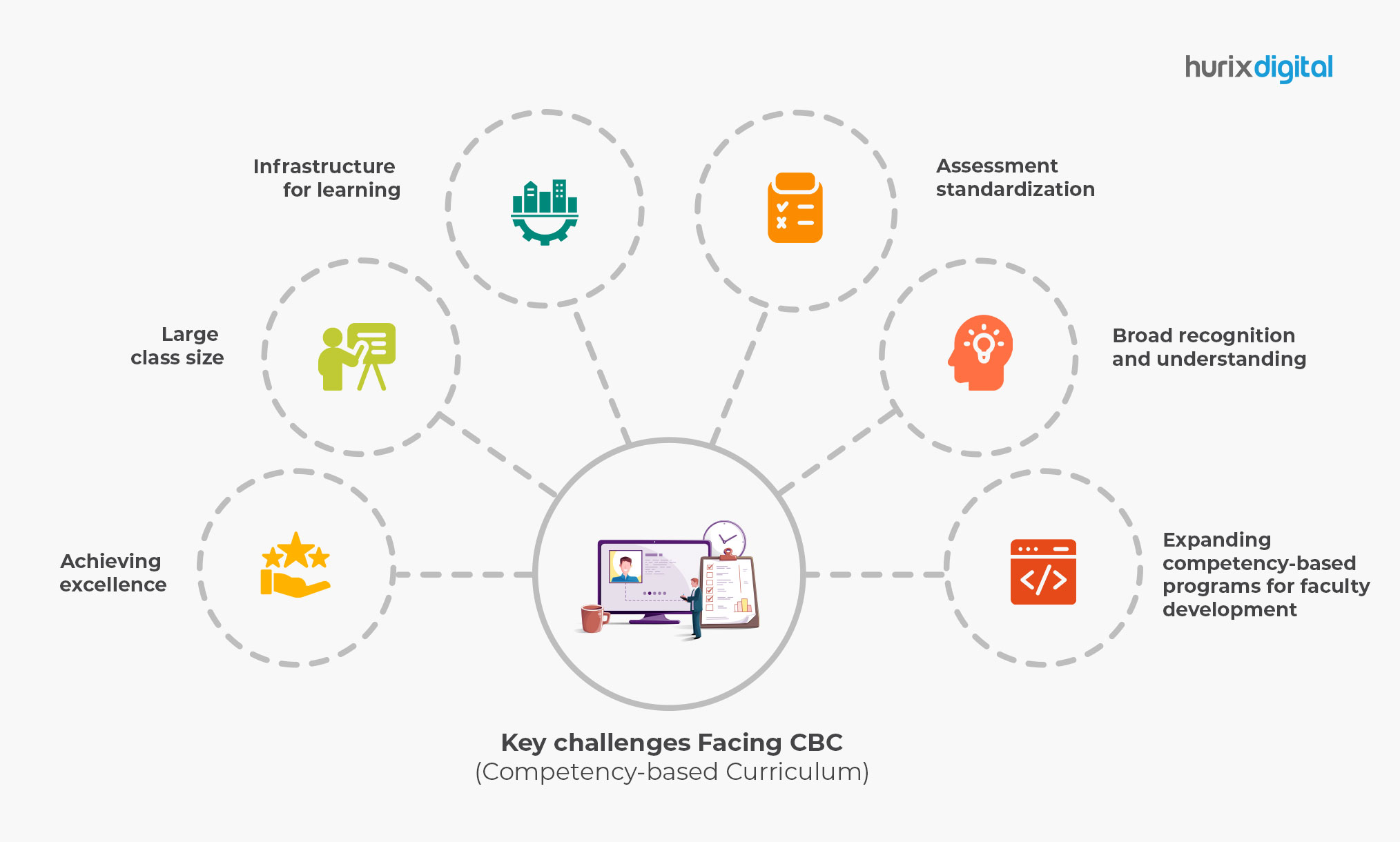The last few years have seen the increasing usage of competency-based curriculum (CBC) in higher education, but that has come with various challenges facing CBC. This is largely due to its innovative approach and being a self-paced, mastery-oriented program that leverages technology to a great extent.
Apart from offering an alternative to traditional courses (whether held in-person or online), a competency-based learning curriculum allows students to master and demonstrate competency in various tasks and skills to complete courses. Although the model has many potentials, it does come with certain challenges and flaws that need to be overcome to make it a viable education model.
In this blog, we will explore the key challenges facing cbc for higher education institutions while implementing a competency-based training curriculum.
Table of Contents:
What are the Advantages of a Competency-based Training Curriculum?
A competency-based curriculum focuses on targeted learning processes that identifies specific competencies or skills in students. This enables learners to develop mastery of each of these competencies or skills at their own pace.
Besides offering a more personalized path to the course completion, the competency-based approach is also structured to demonstrate learning in clearly articulated competencies. It emphasizes authentic assessment to evaluate what the learner knows and can do through real-life projects.
The key objective of competency-based learning is to break away from the traditional classroom model, where every student studies the same subject matter at the same speed.
A competency-based training curriculum primarily emphasizes on what learners are expected to do rather than simply focusing on what they are expected to know. A completely learner-centric curriculum and fully adaptive to the changing needs of students, CBC envisions every learner to have achieved the following competencies by the end of the course-
- Critical thinking and problem-solving skills
- Imagination and creativity
- Communication and collaboration skills
Also Read: A Comprehensive 7-Step Process to Design a Competency-Based Curriculum
There are 5 main advantages of competency-based training:
- Flexibility: Competency-based training allows learners to progress at their own pace and to focus on the specific skills and knowledge they need to achieve their goals. This can be especially useful for learners who may have time constraints or who may have prior knowledge or experience in certain areas.
- Customization: Competency-based training can be tailored to meet the specific needs and goals of the learner, rather than following a predetermined curriculum. This can be more effective in helping learners to achieve their desired outcomes.
- Measurable outcomes: Competency-based training focuses on specific, measurable skills and knowledge, which can make it easier to track progress and assess learning outcomes.
- Relevance: Competency-based training can be more directly relevant to the learner’s needs and career goals, as it focuses on the skills and knowledge that are most applicable to their chosen field or profession.
- Increased motivation: Competency-based training can be more engaging for learners as it allows them to see the direct relevance of what they are learning and to track their progress towards specific goals. This can increase motivation and help learners to stay focused and engaged in their learning.
What are the key challenges facing CBC (Competency-based Curriculum)?

1. Achieving excellence
A competency-based curriculum requires educational institutions to demonstrate an uncompromising commitment to excellence. Some of the key concerns they face here include-
- How to ensure that the rigor and quality of the curriculum-based programs remain equitable across the board?
- How will the curriculum realize this goal of achieving excellence?
- How will the competency-based approach break the path of mediocrity and move beyond the fate of other general education trends?
2. Large class size
Another key challenge in the implementation of a competency-based curriculum is the large class size. A higher number of students in a classroom tends to affect student-instructor interactions and can also prevent peer exchanges during discussions in the classroom.
Since every student learns differently, the instructor’s pace in a high-density class may work for some students but not for others.
This greatly hinders implementation of competency-based curriculum and restricts educators from applying learner-centric interactive teaching methods.
Limiting the class size can be beneficial for both students and educators, leading to improved performance of learners as instructors will be able to assist students with learning difficulties individually.
3. Infrastructure for learning
Since a competency-based curriculum involves a fundamental shift from passive to active learning, the infrastructure needed for this model is very different. In order to implement a competency-based curriculum, educational institutions require everything from modern classrooms, creative centers, smart boards, laboratories, and the latest technologies at all levels, as it can help students to actively participate in the learning process.
This essentially means that the administrators need to be fully convinced about the advantages that their institutions accrue from implementing the new competency-based learning model.
4. Assessment standardization
One of the challenges facing CBC in higher education is standardizing the mechanisms in which competencies or skills are assessed. This is because, being a personalized learning approach, CBC focuses largely on subject mastery, irrespective of the place, time, and pathway to completion.
Below are some of the concerns that institutions struggle with in terms of assessment implementation-
- How to measure each student for every performance outcome?
- How to identify opportunities for learners to demonstrate individualized subject mastery without adhering to standardized performance outcomes?
- Who determines the student learning outcomes, and should they vary from institution to institution?
5. Broad recognition and understanding
Competency-based learning is a relatively new learning model. Students graduating through this method of learning are sometimes greeted by skeptical employers who aren’t aware of the model.
Additionally, many employers in the job market are rigid about hiring students passing from traditional educational programs and who attain a certain grade.
6. Expanding competency-based programs for faculty development
Educators in many higher education institutions are ill-equipped to implement competency-based curriculum unless they were a product of it themselves. This is the reason why building their capacity is one of the essential prerequisites before implementing competency-based learning.
Further, there is one of the challenges facing CBC related to the instructor’s knowledge of competency-based pedagogy. While some of them might understand competency-based learning, a large number of them still struggle with the concept and lack the capacity demanded by the competency-based system.
Some of the things that need to be addressed here include-
- Identifying the competencies needed based on the specific job profiles
- Performance expectations
- Measurement criteria in different relevant domains including communication and analytical skills to design the learning experiences
Also Read: Why Should Higher Education Institutions Encourage Competency-Based Learning (CBL)
In conclusion
Competency-based learning has garnered some strong interest among higher education institutions and other education stakeholders due to its innovative approach.
Although a competency-based curriculum is much more efficient in helping the learner acquire competencies needed for doing specific tasks, there are various challenges facing CBC in its implementation.
To systematically overcome these challenges, institutions need to primarily focus on faculty capacity-building to help them get familiar with the changing learner-centered programs. Institutions can achieve this through various faculty development programs, which facilitates them to learn on-the-job the skills required for this type of innovative educational program.
HurixDigital helps educational institutions develop competency-based curriculum. Our SMEs and instructional designers work collaboratively to ensure an enriching, engaging, and experiential experience for the learners as they master skills. Get in touch with us if you want to know more about our competency-based content development services.
Frequently Asked Questions (FAQs)
1. How does a competency-based curriculum differ from a traditional curriculum?
A. A competency-based curriculum centers on students showcasing specific skills or competencies, while a traditional curriculum prioritizes delivering content knowledge.
2. Can a competency-based curriculum be implemented at all educational levels?
A. The implementation of a competency-based curriculum is possible across primary, secondary, and higher education levels, and its adaptability to various subjects, disciplines, and complexities allows for its flexible application in diverse educational environments.
3. How does a competency-based curriculum promote personalized learning?
A. By enabling students to advance at their own pace, a competency-based curriculum fosters personalized learning, where mastery of specific competencies determines progression.
4. How does a competency-based curriculum prepare students for the workforce?
A. Aligned with workforce requirements, a competency-based curriculum emphasizes practical competencies and real-world application, equipping students with job market readiness.
5. How does a competency-based curriculum assess student progress?
A. Assessments in a competency-based curriculum focus on the demonstration of specific skills and competencies. They may include performance tasks, projects, portfolios, or real-world applications, providing a comprehensive understanding of students’ abilities and progress.










